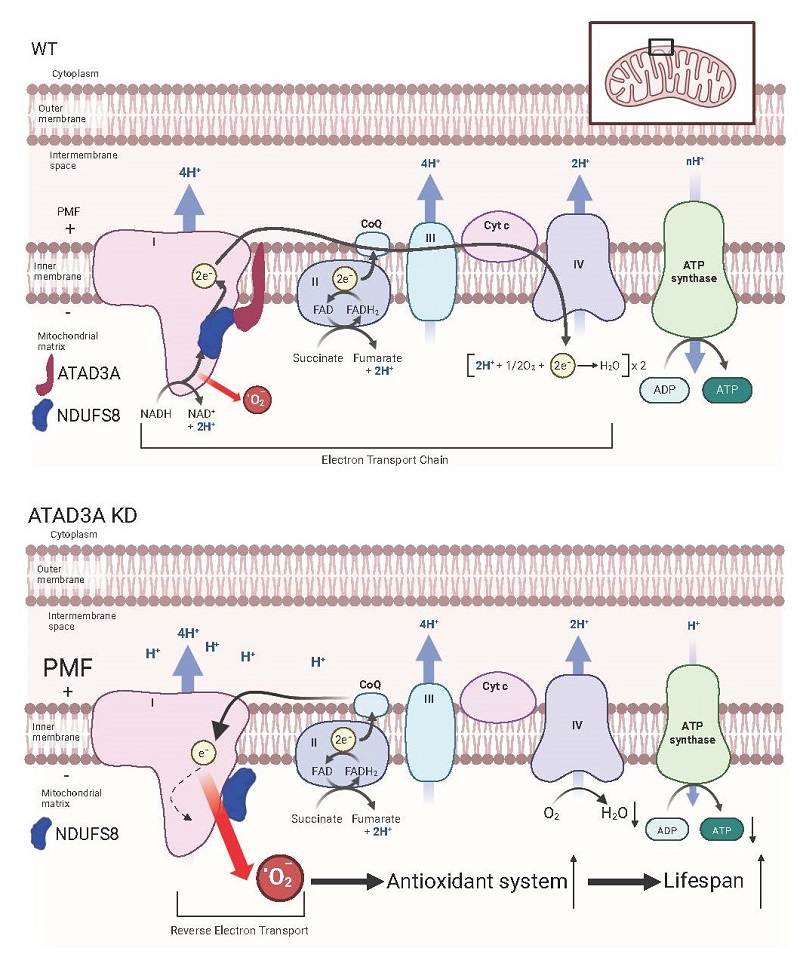Knockdown of ATAD3A Unveils a Novel Mechanism for Precision Redox Regulation
Mitochondria, the cell's powerhouses, are the primary source of reactive oxygen species (ROS), molecules that can act as both essential signaling agents and damaging stressors. While moderate ROS levels support cellular adaptation and survival, uncontrolled production drives oxidative damage linked to aging and disease. In particular, site-specific ROS generated by mitochondrial complex I through reverse electron transport (RET) has drawn increasing attention for its unique regulatory functions.
Recently, a research team led by Prof. CHEN Chang from the Institute of Biophysics of the Chinese Academy Sciences, has uncovered a previously unknown role for the mitochondrial protein ATAD3A in regulating redox homeostasis, offering new insights into aging and disease intervention strategies.
Their findings, published in Free Radical Biology and Medicine on September 15, highlight the importance of "precision redox regulation" - the concept that not only the levels but also the specific sites of ROS production determine their physiological impact.
Through genome-wide screening, researchers discovered that silencing the atad-3 (ATAD3A) gene significantly increased mitochondrial ROS levels in both nematodes and mammalian cells. Mechanistically, ATAD3A was shown to directly interact with NDUFS8, a core subunit of complex I. Loss of ATAD3A impaired complex I assembly and reduced its activity, ultimately altering electron transport and inducing RET-dependent ROS production.
This study reveals a new function of ATAD3A deficiency in extending nematode lifespan by inducing RET-ROS, which activates protective responses.
New evidence indicates that even within the same mitochondria, ROS generated at different sites can exert fundamentally distinct physiological functions. The concept of "precision redox" therefore holds significant importance in redox biology and biomedical research.

Figure. Schematic model of the mechanism by which ATAD3A deficiency induces RET-ROS to exert beneficial effects
(Image by CHEN Chang's group)
Article link: https://doi.org/10.1016/j.freeradbiomed.2025.09.027
Contact: CHEN Chang
Institute of Biophysics, Chinese Academy of Sciences
Beijing 100101, China
E-mail: changchen@ibp.ac.cn
(Reported by Prof. CHEN Chang's group)

